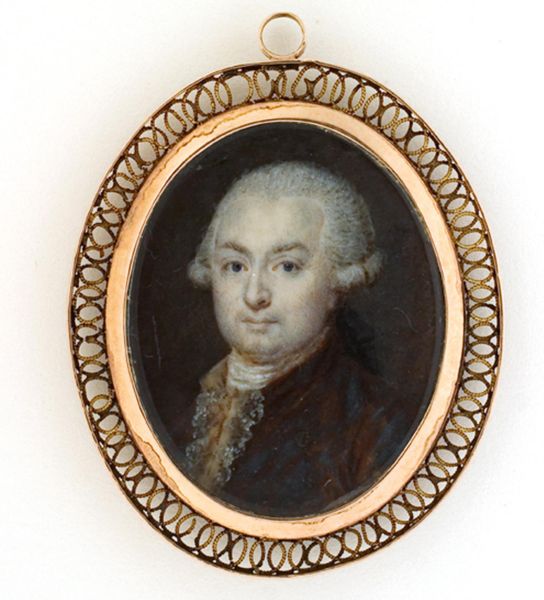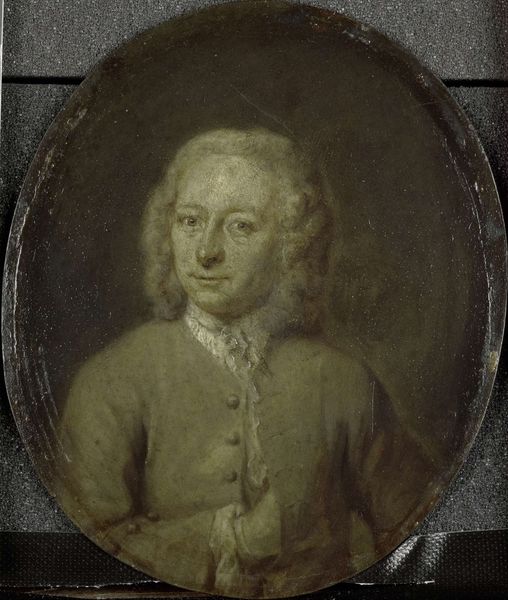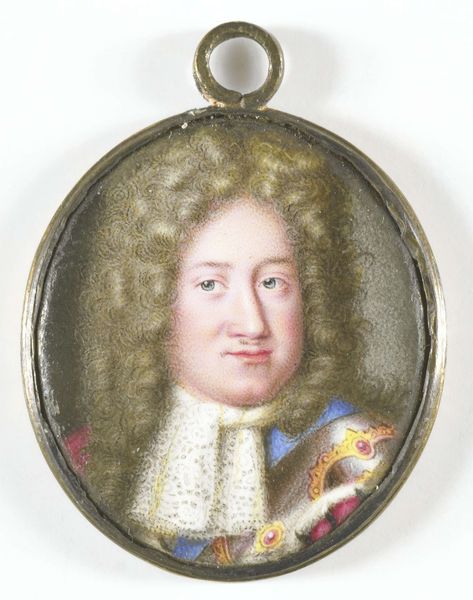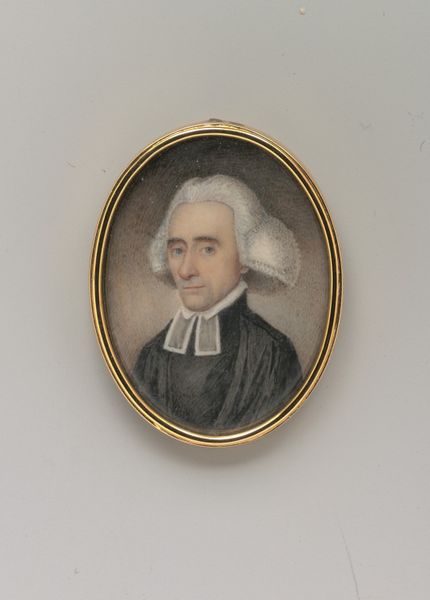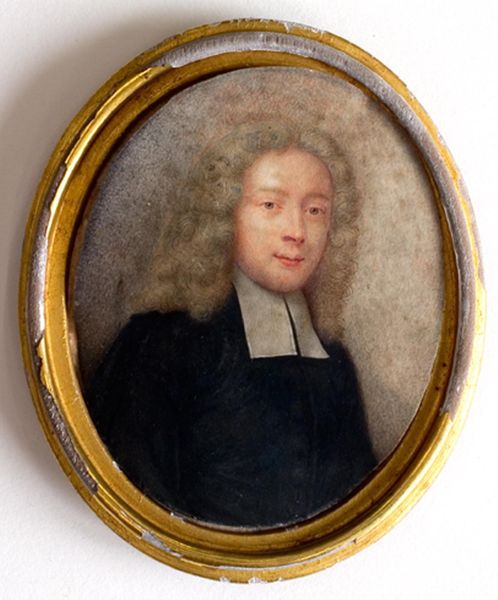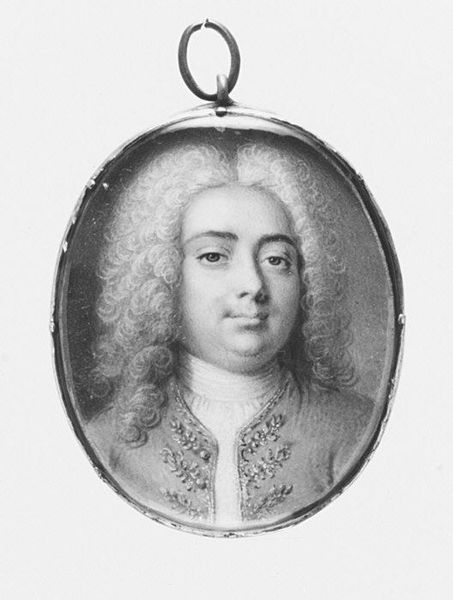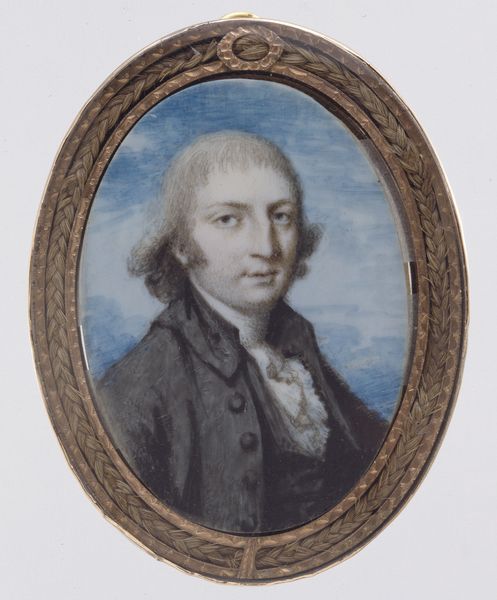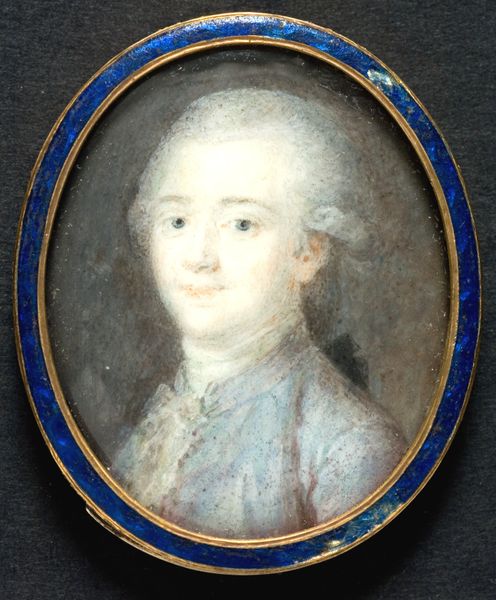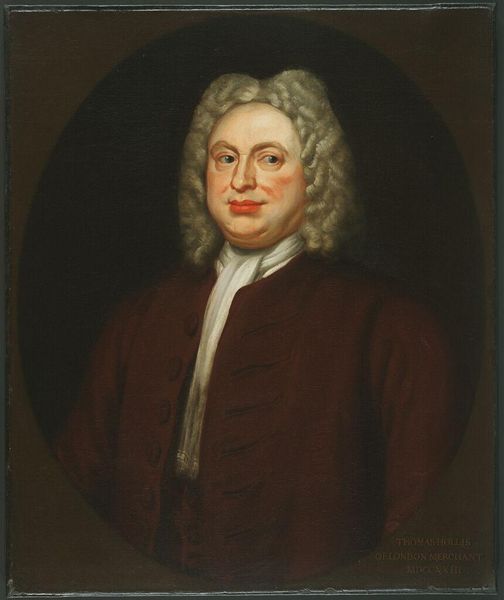
painting
#
portrait
#
painting
#
miniature
#
rococo
Dimensions: height 3.1 cm, width 2.5 cm, height 3.8 cm, width 2.8 cm, depth 0.4 cm
Copyright: Rijks Museum: Open Domain
Editor: Here we have "Portret van een man," or "Portrait of a Man," painted in 1737 by John Graham. It’s a miniature painting, likely worn as a pendant. The colors are muted, and the man’s expression seems a little…flat. What's your read on this portrait, especially considering its historical moment? Curator: Well, given its creation in 1737, it embodies a pivotal point where we see the evolving role of art within emerging social structures. Miniature portraits were increasingly popular among the upwardly mobile bourgeoisie. These were symbols of status, often functioning as keepsakes or even tiny calling cards, solidifying social networks. How do you see this context influencing the artwork itself? Editor: It does give the piece an added layer of significance. Was the goal to project a certain image, perhaps, more than to capture genuine likeness? The somewhat formulaic composition and the sitter's guarded expression make me wonder. Curator: Exactly! Rococo portraits like this participated in crafting and disseminating an idealized image of the sitter within elite circles. These miniatures promoted social and political self-fashioning, solidifying class identity and conveying values such as restraint, affluence, and decorum to a public eager to emulate these qualities. Consider, what message do you think someone wearing this portrait would want to communicate about themselves? Editor: I guess it says, “I’m respectable. I'm part of the right circles.” Fascinating to see such personal objects intertwined with broader social forces! Curator: Indeed. It challenges the common idea of portraiture simply mirroring reality, showing that it actively shapes our perception of historical figures and their place in society. Editor: I hadn't considered how something so small could carry so much weight. It changes how I understand not just this work, but other portraits too. Curator: Precisely, examining art through its social and historical context provides an access point that transforms how we view not just individual works, but art as a reflection of the human story.
Comments
No comments
Be the first to comment and join the conversation on the ultimate creative platform.
